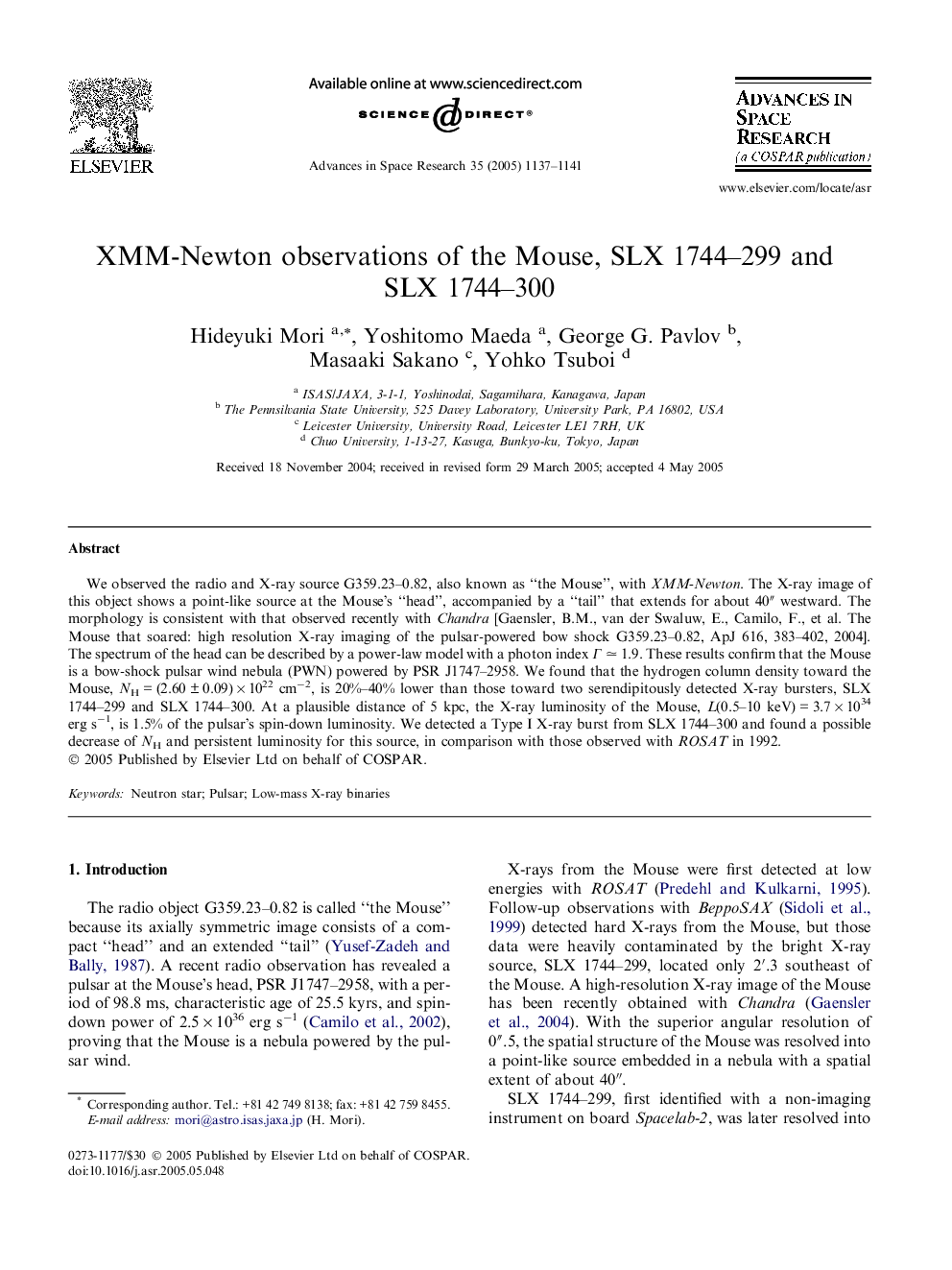| کد مقاله | کد نشریه | سال انتشار | مقاله انگلیسی | نسخه تمام متن |
|---|---|---|---|---|
| 10695966 | 1020285 | 2005 | 5 صفحه PDF | دانلود رایگان |
عنوان انگلیسی مقاله ISI
XMM-Newton observations of the Mouse, SLX 1744-299 and SLX 1744-300
دانلود مقاله + سفارش ترجمه
دانلود مقاله ISI انگلیسی
رایگان برای ایرانیان
کلمات کلیدی
موضوعات مرتبط
مهندسی و علوم پایه
علوم زمین و سیارات
علوم فضا و نجوم
پیش نمایش صفحه اول مقاله

چکیده انگلیسی
We observed the radio and X-ray source G359.23-0.82, also known as “the Mouse”, with XMM-Newton. The X-ray image of this object shows a point-like source at the Mouse's “head”, accompanied by a “tail” that extends for about 40â³ westward. The morphology is consistent with that observed recently with Chandra [Gaensler, B.M., van der Swaluw, E., Camilo, F., et al. The Mouse that soared: high resolution X-ray imaging of the pulsar-powered bow shock G359.23-0.82, ApJ 616, 383-402, 2004]. The spectrum of the head can be described by a power-law model with a photon index Πâ 1.9. These results confirm that the Mouse is a bow-shock pulsar wind nebula (PWN) powered by PSR J1747-2958. We found that the hydrogen column density toward the Mouse, NH = (2.60 ± 0.09) Ã 1022 cmâ2, is 20%-40% lower than those toward two serendipitously detected X-ray bursters, SLX 1744-299 and SLX 1744-300. At a plausible distance of 5 kpc, the X-ray luminosity of the Mouse, L(0.5-10 keV) = 3.7 Ã 1034 erg sâ1, is 1.5% of the pulsar's spin-down luminosity. We detected a Type I X-ray burst from SLX 1744-300 and found a possible decrease of NH and persistent luminosity for this source, in comparison with those observed with ROSAT in 1992.
ناشر
Database: Elsevier - ScienceDirect (ساینس دایرکت)
Journal: Advances in Space Research - Volume 35, Issue 6, 2005, Pages 1137-1141
Journal: Advances in Space Research - Volume 35, Issue 6, 2005, Pages 1137-1141
نویسندگان
Hideyuki Mori, Yoshitomo Maeda, George G. Pavlov, Masaaki Sakano, Yohko Tsuboi,